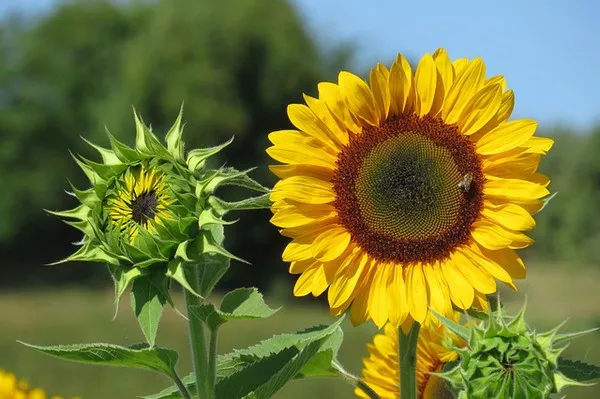Sunflowers, with their vibrant hues and iconic appearance, bring joy and warmth to any space. Whether they are freshly picked from the garden or received as a thoughtful gift, the desire to preserve their beauty forever is a sentiment shared by many. Fortunately, there are various methods to ensure the longevity of sunflowers, allowing you to enjoy their radiance for an extended period. In this article, we will explore different techniques and tips on how to preserve sunflowers, enabling you to cherish these floral treasures for years to come.
See Also: How Long Does It Take To Dry Flowers?A Comprehensive Guide
Drying Sunflowers Naturally:
One of the simplest and most popular methods for preserving sunflowers is air-drying. This process allows the flowers to maintain their shape, color, and texture while removing excess moisture. Here’s a step-by-step guide to air-drying sunflowers:
a. Harvest at the Right Time: Choose sunflowers that are in full bloom but not overripe. Harvest them in the morning when the flowers are at their freshest.
b. Remove Foliage: Trim excess leaves and foliage from the sunflower stems, leaving only the main stem and flower head.
c. Bundle and Hang: Group several sunflowers together and secure them with a rubber band or twine. Hang the bundles upside down in a cool, dry, and dark place. This process typically takes 1-2 weeks for the flowers to fully dry.
d. Check for Dryness: Once the sunflowers are completely dry, the petals will feel crisp to the touch. Remove them from the drying area and display them as desired.
Silica Gel Drying:
Silica gel is a desiccant that absorbs moisture efficiently, making it an excellent choice for preserving sunflowers. This method helps retain the flowers’ natural color and shape. Follow these steps for silica gel drying:
a. Select Fresh Sunflowers: Choose sunflowers in prime condition and cut the stems to your desired length.
b. Prepare a Container: Place a layer of silica gel at the bottom of an airtight container, ensuring it is deep enough to accommodate the sunflowers without bending or touching.
c. Position Sunflowers: Insert the sunflowers into the container, ensuring they are not touching each other or the sides of the container. Gently pour silica gel around and over the flowers until completely covered.
d. Seal the Container: Close the container tightly and leave it undisturbed for about a week. Check the flowers periodically, and once they are fully dried, carefully remove them from the silica gel.
e. Display with Care: Once removed, gently brush off any remaining silica gel from the flowers. Display your preserved sunflowers in a vase or shadow box.
Pressing Sunflowers:
Pressing sunflowers is an artistic and timeless method of preservation. This technique creates flattened, delicate blooms suitable for framing or incorporating into various crafts. Here’s how to press sunflowers:
a. Choose Fresh Blooms: Select sunflowers that are in bloom but not overly mature. Remove excess leaves and ensure the flowers are clean and dry.
b. Prepare for Pressing: Place the sunflowers between sheets of absorbent paper, such as parchment or blotting paper. Arrange them carefully to avoid overlapping.
c. Pressing Method: Use a heavy object, such as books or a flower press, to apply pressure evenly over the sunflowers. Keep them pressed for 2-4 weeks, changing the paper periodically to facilitate drying.
d. Display the Pressed Flowers: Once fully dried and pressed, carefully remove the sunflowers from the paper. Create art pieces, greeting cards, or frame them for a decorative display.
Conclusion:
Preserving sunflowers allows you to capture the beauty of these magnificent blooms and enjoy them for years to come. Whether you choose to air-dry, use silica gel, or press your sunflowers, each method offers a unique way to extend the lifespan of these vibrant flowers. Experiment with different preservation techniques to find the one that best suits your preferences, and relish the timeless allure of sunflowers in your home or as thoughtful gifts for loved ones. With a little care and creativity, you can make the fleeting beauty of sunflowers last indefinitely.


